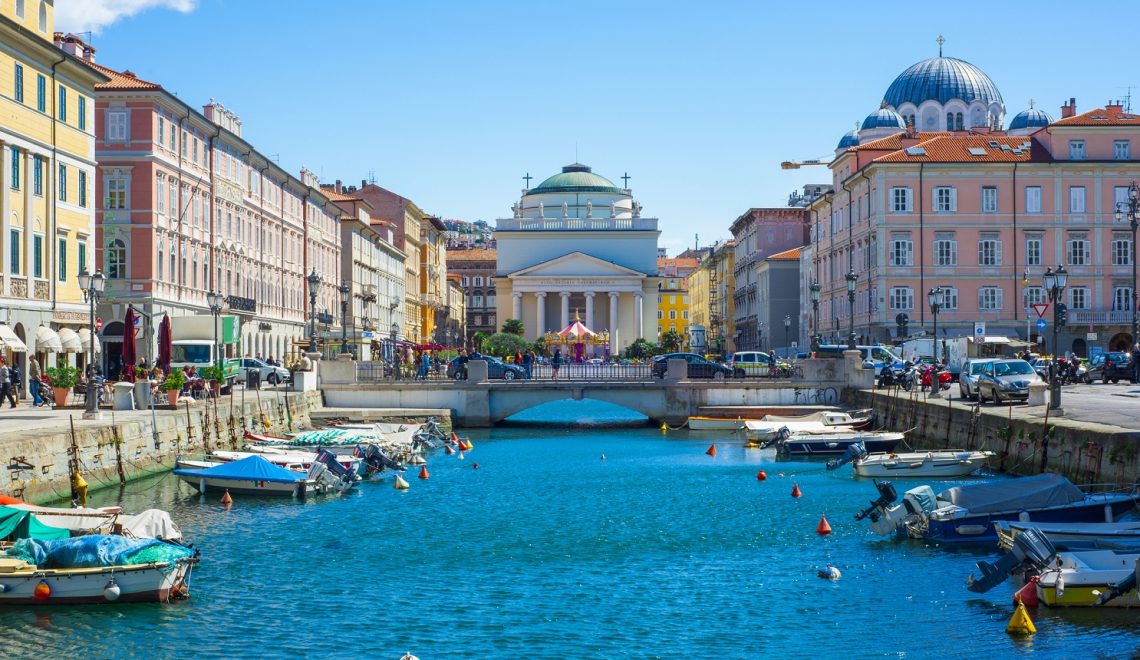
Let’s explore Trieste, a city with a complex identity and a rich history: what to see and what to do on a weekend in the capital of Friuli Venezia-Giulia.
Trieste is famous for its intense wind and historical literary cafés. It is sometimes perceived as “closeted and somewhat sullen”, little more than a transit area, a crossroads, between Istria, Serbia and the Adriatic Sea.
But Trieste is, above all, an authentic city, removed from the clutter and trappings of tourism that envelops so many other major Italian cities. A bridge between western and central-southern Europe, Trieste possesses a deeply varied identity, all waiting to be discovered.
It is therefore worth dedicating to this city the attention it deserves by setting aside a weekend to explore this intriguing port city, beautifully decorated in complete Art Nouveau style.
What to see in Trieste

Our visit to Trieste begins in Piazza Unità, a place that evokes the city’s disputed soul in the many changes of name it has undergone. Initially known as St. Peter’s Square, it became Piazza Grande and, only in 1918, Piazza Unità. After the end of World War II and the official return to Italian territory, it finally became Piazza Unità d’Italia.
A picturesque square overlooking the sea, it is framed by some of the city’s most important buildings, and in the center features the Fountain of the Four Continents, the only ones known at the time of its construction in the mid-18th century.
Just in front of the square, we find another of Trieste’s must-see spots: the Molo Audace, originally Molo San Carlo, so renamed after the destroyer “Audace,” the first Italian Navy ship to dock in Trieste at the end of the Great War.
Among Trieste’s the must-see sites, we also mention:
- the Castle of San Giusto (15th century), located on the highest hill of the city – where the original city nucleus founded in Roman times stood – and which currently houses the Trieste Civic Museum;
- the Cathedral of San Giusto, which stands next to the castle of the same name and is decorated with an exceptional Gothic rosary and Byzantine mosaics;
- the Castle of Miramare, located 10 km from the center and built in the second half of the 19th century by Duke Maximilian of Habsburg. From here you can enjoy an exceptional view thanks to the position perched on high ground overlooking the sea.
Moving slightly outside the city center, we find another point of extreme interest: the Ridero di San Sabba, the only Nazi lager in Southern Europe, now a museum and memorial.
Things to do in Trieste
Let’s move on to the recommended activities, starting with the short trip to the Victory Lighthouse; it was inaugurated in 1924 in the presence of King Victor Emmanuel III. It is the most powerful lighthouse in the entire Adriatic Sea and also commemorates the fallen of the First World War: it was designed immediately after the defeat of Caporetto and the victorious battle of the Piave. Also located here are the anchor of the destroyer “Audace” and the statue of the Unknown Sailor.
We cannot fail to also recommend a good cup of coffee and pastries in one of the city’s historic cafés. During the nineteenth and early twentieth centuries, these were the haunts of prominent novelists and poets, such as James Joyce, Italo Svevo, Stendhal, and Umberto Saba. The most famous include the Caffè San Marco, the Caffè Pirona, the Caffè degliMirchi, and the oldest of all: the Caffè Tommaseo, which opened in 1830.
Then, you must try a tour on board the characteristic Opicina tram, its 5 km route connects Piazza Oberdan with the center of Villa Opicina, located more than 300 meters above sea level. This is a truly scenic journey back through time aboard a vehicle that has been in operation since 1902 and regularly negotiates a 26% incline!
Finally, if you have time and a way to explore the surroundings of Trieste, we strongly recommend the exciting visit of the Giant Cave, a huge karst cave discovered in 1800, located on the border with Slovenia.
To Trieste with Italo
Italo takes you to Trieste with high-speed rail, thanks to our new stations!
We offer direct connections to Trieste from many Italian cities: buy your ticket and get on board.




